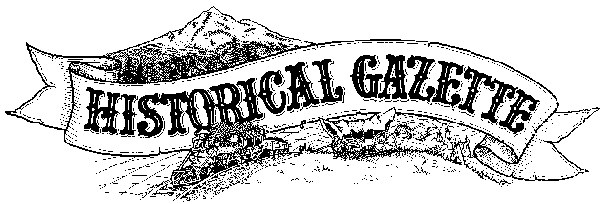
End of the Oregon Trail
Volume Three Number Four
Oregon Trail 1840-1995
Willamette Falls Near the mouth of the Clackamas River was an old moss-covered, dilapidated house 300 feet long. In it lived the entire Clackamas Indian tribe. The Indians along this portion of the Wal-lamt or Willamette River were hosts to the hundreds of migrating Mollalas, Calapooyas, Multnomahs, Teninos and Chinooks who came each year to catch salmon at Hyas Tyee Tumwater, what white men call Willamette Falls. The Indians' permanent mark can still be seen in the petroglyphs at the base of the falls.
The first white man to take an interest in the Willamette Falls area was Alexander Ross of the NorthWest Co. in 1815. In 1829, the Hudson Bay Co. (HBC), under Dr. John McLoughlin, took a land claim at the falls and encouraged former trappers to settle nearby in French Prairie. Next were the Methodists. In 1840, the Rev. Alvin Waller established a mission. The Methodists and Dr. McLoughlin would be at odds for a dozen years.
McLoughlin surveyed and laid out the townsite of Oregon City in 1842, replacing the commonly used name of Willamette Falls. The first plat of Oregon City, signed by Dr. McLoughlin, sits next to the original plat of San Francisco filed in the same Clackamas County Courthouse, at the time the only U.S. Court House west of the Rockies.
Oregon City has always been a natural place of commerce. The first business, the American Store, was established in 1842 by Capt. John Couch who represented J.N. Cushing of Massachusetts. In 1843, Francis Pettygrove opened his Red Store. He and Oregon City lawyer Asa Lovejoy would later stake the claim which became Portland. In 1843, the HBC opened their store at Oregon City. The stores were opened in response to the increasing numbers of immigrants from the Oregon Trail who needed to be supplied to start their farms.
In late 1844 Oregon City was incorporated by the Oregon Provisional Government. It soon had 500 residents, two churches (Catholic and Methodist), two saloons, a newspaper, 75 houses, two blacksmiths, two coopers, two cabinet makers, two hatters, two silversmiths, and four tailors to supply the new settlers.
Along the northern edge of McLoughlin's townsite was the land claim of George Abernethy. He was a steward of the Methodist Mission from 1840 to 1844. He supervised their granary and operated a mercantile business. He made and used Abernethy rocks for exchange due to lack of currency. The flints inscribed G.A. were backed by his high standing. Abernethy Green, just above his house, was the marshalling point for wagons newly arrived on the Oregon Trail, both those arriving by raft from Ft. Vancouver, or on the Barlow Road. ~Jim Thomkins, Oregon Trails Histories
The story above is from the Front Page of this edition. The Historical Gazette entitled "End of the Trail: Oregon City" was originally created for the End of the Oregon Trail Interpretive Center in Oregon City to commemorate their opening in June 1995. The Center relives the journey of the pioneers over the 2,000 mile trail and the hardships along the way. We encourage you to visit the Interpretive Center whenever you come to Oregon. For a real history tour, start off where the pioneers did in St. Louis, Missouri and travel the whole trail, from the Midwest to the Pacific.

Bridget E. Smith, editor & publisher
Email | Home Page | Historic Headlines
Historical Gazette
Published in Portland, Oregon
© 1991-


